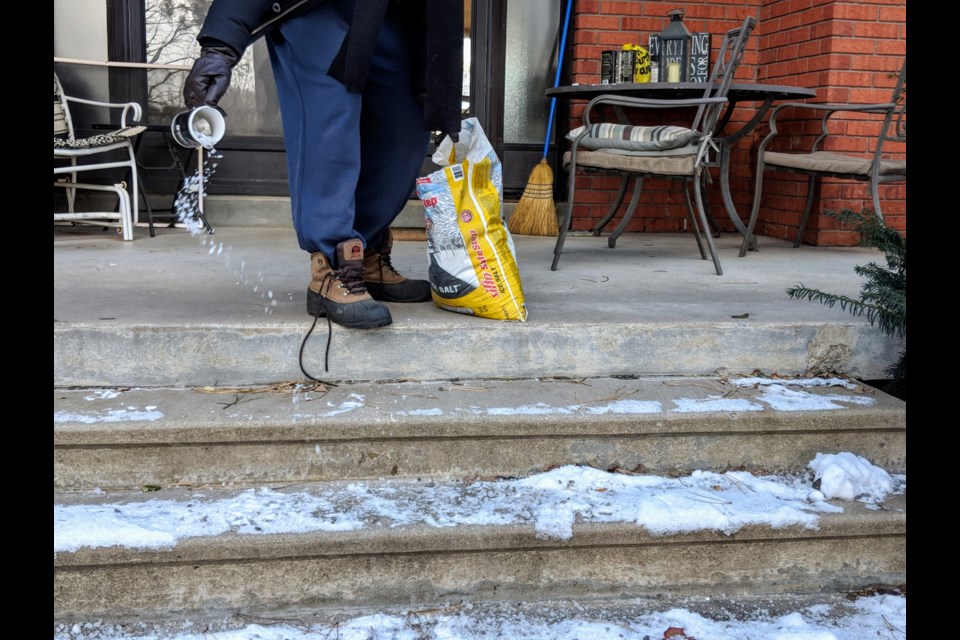EDITOR'S NOTE: OrilliaMatters is partnering with Sustainable Orillia to publish a weekly energy tip. Check back here every Tuesday evening for a new tip.
In Orillia, we’re used to very cold temperatures, icy conditions, and heavy snowfall during the winter season. Unfortunately, we’re also used to seeing piles and piles of road salt — even when there is no snow or ice to be seen.
There’s no question that winter salt helps keep our roads, parking lots, and pathways clear of snow and ice. Spreading road salt on our parking lots and sidewalks helps to prevent slips and falls. But too much of it can create big problems, especially for our lakes and rivers.
Chloride levels in Canadian surface waters used to be less than 10 milligrams/litre (mg/L)—often less than 1 mg/L. In recent years, chloride levels have steadily risen as a result of road salt use. Chloride levels in Orillia’s Sundial Creek have consistently been measured at over 100 mg/L and frequently at 160 mg/L.
Road salt has, accordingly, become a major contaminant in our freshwaters. As ice and snow begin to melt, excess salt is washed into waterways and ends up in our local lakes and the Great Lakes. In some areas, aquatic habitats are becoming too salty for many freshwater species to survive.
In other areas, high levels of salt are also turning up in people’s drinking water and wells. In both cases, scientists point to excessive winter salt use as the culprit.
While salt can make winter safer, it's only part of the answer. Do your part. Protect yourself with the following:
- Wear sturdy footwear designed for snow and ice to help prevent slips and falls. Boots should have a good tread for traction with low, wide heels.
- Put snow tires on your car. Slow down on the road. Give yourself extra time to arrive at your destination. Drive for the conditions. And make sure you give plow drivers plenty of space.
- Use a traction aid like kitty litter or sand – even coffee grounds or sawdust – on areas that tend to become slippery.
To keep your driveway and sidewalk clear of snow and ice:
- Shovel first. When you remove snow and ice by shovelling, you’ll need less salt and it can be more effective. Get out there as early as you can and keep up with storms. You may find that salt isn't needed.
- Shovel unsalted snow to lower areas or onto lawns to direct melting snow away from paved areas.
- Prevent icy buildups by redirecting downspouts away from walkways and driveways.
Sprinkle de-icing material on icy areas only, and follow the manufacturer’s instructions for working temperatures and application rates. Give de-icing material time to do its work.
According to the City of Orillia’s website, “Salt use is kept to a minimum. It is spread only on main (arterial) roads and some secondary collector streets. Salting occurs at the beginning of a snowfall to establish a melting point to help keep streets clear.”
If hiring a snow removal contractor to clear driveways or lots, use certified “Smart about Salt Contractors”. They’re trained to reduce salt use while maximizing effectiveness and safety. And if you feel you must use salt in an area, remember It takes less than a cup of salt to melt ice from a metre of pavement! When it comes to road salt, less is more.
And if you see excessive salt being applied, speak to the property owner. Tell them about the environmental consequences of applying too much. Tell them about agencies like Smart About Salt, who can help train their staff or contractors in correct winter salt use.
We all want to survive our winters. And surely we want our earth and waterways to survive them, too — long into the future!
